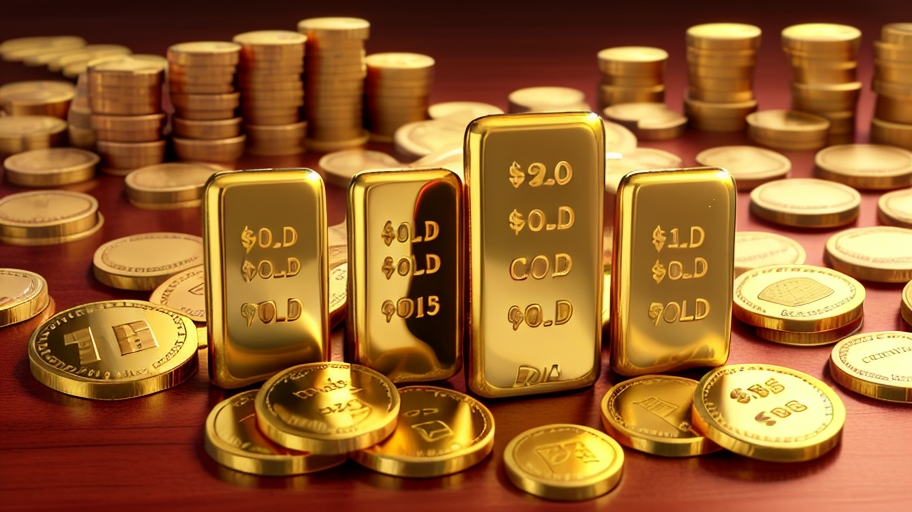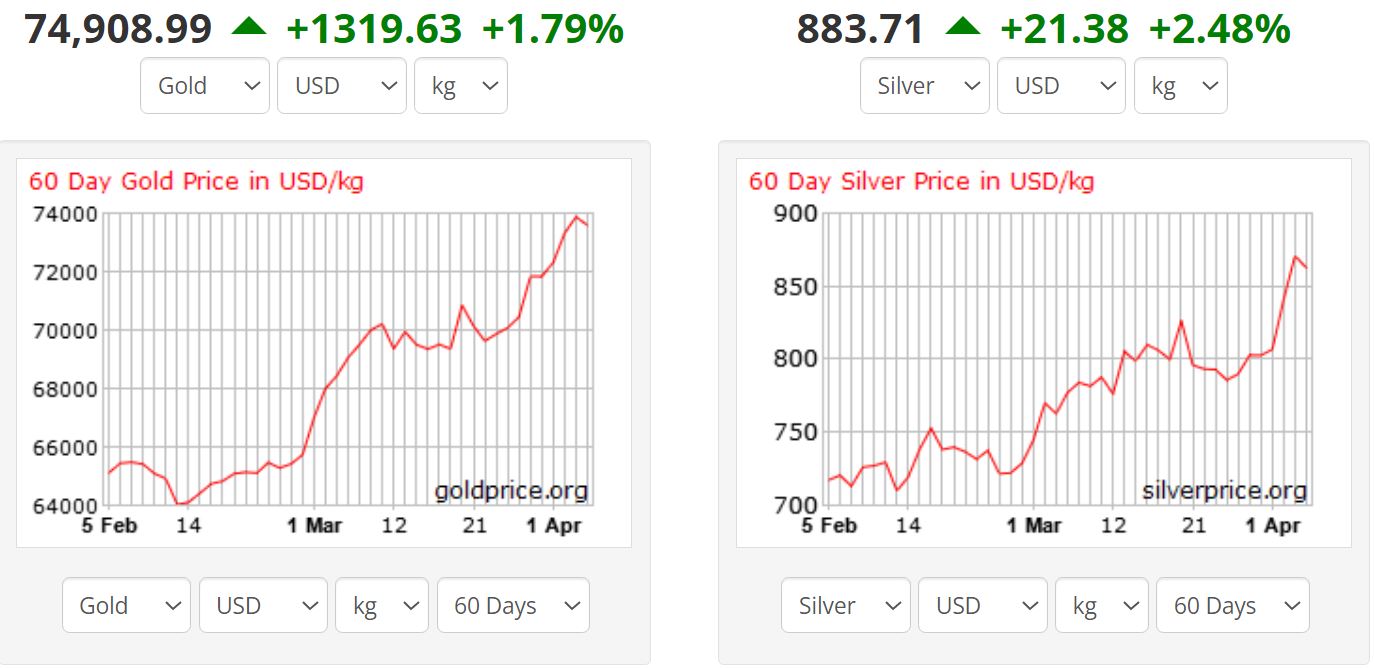In recent weeks, the prices of gold and silver have experienced significant upward movements, captivating the attention of investors and analysts worldwide.

Table of Contents
- Introduction
- Understanding the Recent Price Movements
- Implications for Investors and Markets
- Conclusion
- 🌐 Sources
Introduction
In recent weeks, the prices of gold and silver have experienced significant upward movements, captivating the attention of investors and analysts worldwide. These price hikes have sparked discussions about the underlying factors driving the rally and the potential implications for global economies and financial markets. Let’s delve into the details of the recent surge in gold and silver prices, analyzing the key drivers behind them and their broader impact.
The recent price hikes in gold and silver underscore the enduring appeal of precious metals as safe-haven assets in times of economic uncertainty and geopolitical turmoil.
Understanding the Recent Price Movements
Gold and silver, often regarded as safe-haven assets, have seen remarkable price increases amidst a backdrop of economic uncertainties and geopolitical tensions. Investors traditionally turn to precious metals during times of turmoil, seeking refuge from market volatility and inflationary pressures. The recent surge in gold and silver prices reflects this flight to safety, as investors adjust their portfolios to mitigate risks and preserve wealth.

Economic Uncertainty and Inflation Concerns
Central banks’ unprecedented monetary stimulus measures and expansive fiscal policies in response to the COVID-19 pandemic have raised concerns about inflationary pressures. As governments inject trillions of dollars into their economies, fears of currency devaluation and rising inflation have intensified. In such an environment, gold and silver serve as tangible assets that retain their value over time, making them attractive investment options for hedging against inflation and currency depreciation.
ADVERTISEMENT
Geopolitical Tensions and Market Volatility
Geopolitical tensions, including conflicts in regions such as Eastern Europe and the Middle East, have heightened market volatility and increased demand for safe-haven assets. Gold and silver, with their intrinsic value and historical role as stores of wealth, tend to perform well during geopolitical uncertainties. Investors flock to precious metals as a form of insurance against geopolitical risks, further driving up prices.
Supply Chain Disruptions and Industrial Demand
Supply chain disruptions, exacerbated by the ongoing global pandemic, have affected various industries, including mining and manufacturing. Silver, in particular, is not only a precious metal but also an essential component in various industrial applications, such as electronics and renewable energy technologies. As disruptions disrupt the supply of silver for industrial use, demand for the metal increases, putting upward pressure on prices.
ADVERTISEMENT
Implications for Investors and Markets
The recent surge in gold and silver prices has significant implications for investors and financial markets worldwide. For investors seeking to diversify their portfolios and hedge against inflation and market volatility, precious metals offer an attractive option. However, it’s essential to note that investing in gold and silver carries its own risks, including price volatility and liquidity concerns.
The implications for investors and markets arising from various factors such as market efficiency, investor behavior, and investment implications are multifaceted and crucial for understanding the dynamics of financial markets. Here’s a breakdown of the key implications:
Market Efficiency
The Efficient Market Hypothesis (EMH) posits that asset prices reflect all available information, making it challenging for investors to consistently outperform the market. This theory suggests that actively managed strategies may struggle to generate excess returns [7]. Consequently, investors may need to reconsider their investment strategies, favoring passive approaches such as index funds or exchange-traded funds (ETFs) to achieve market returns.
Investor Behavior
Behavioral finance challenges the traditional view of investors as rational decision-makers and highlights the influence of psychological biases on investment decisions. Understanding investor behavior is crucial for assessing market dynamics, as irrational behaviors can lead to market inefficiencies and asset mispricing [8]. Investors should be aware of common biases like loss aversion and herd mentality to make informed investment choices.
Investment Implications
Various investment implications arise from market inefficiencies and investor behavior. For instance, investors may seek undervalued assets or alternative investments to diversify their portfolios. Additionally, market efficiency considerations may lead investors to favor passive investment strategies over active management [9].
Understanding these implications is essential for investors to navigate financial markets effectively and make informed decisions aligned with their investment objectives and risk tolerance levels.

Conclusion
In conclusion, the recent price hikes in gold and silver underscore the enduring appeal of precious metals as safe-haven assets in times of economic uncertainty and geopolitical turmoil. As investors navigate an increasingly uncertain global landscape, the demand for gold and silver is likely to remain robust. However, investors should exercise caution and conduct thorough research before allocating capital to precious metal investments, considering their unique characteristics and risks.
🌐 Sources
- Gold, silver rates on 6-April-2024
- Gold, silver price today, April 3, 2024: Precious metals record hike on MCX
- Gold Price Today: Yellow metal rises over Rs 6,185/10 grams in 2024? Will it hit Rs 70,000 mark this week?
- Gold, silver, and bitcoin prices, daily market news. April 2024.
- Gold price forecast for spring 2024: Here’s what experts predict
- Gold, silver price today, April 4, 2024: Precious metals record hike on MCX
- How Does an Efficient Market Affect Investors?
- Understanding Investor Behavior
- Implications for Investors of Market Efficiency in Equity Investments
Disclaimer
The content of this article is a summary gathered from various online sources to ensure a comprehensive and nuanced representation of diverse viewpoints. However, the author cannot guarantee the absolute accuracy of specific statements presented. As such, the author disclaims any liability for errors, inaccuracies, or omissions in the content.
© 2024 digitalblackboard.io